Iceland: How much things cost & how to visit on a low budget
Since its currency crash in 2008, Iceland had gone from absurdly expensive to somewhat reasonable in cost, and that has prompted thousands of new tourists to stream in to see what all the fuss is about. It’s hard to find a visitor to Iceland who didn’t absolutely love the place, but you won’t find anyone who tells you it’s cheap, so planning ahead is essential. Prices have continued to creep up in 2015 and 2016, so it’s again among the most expensive European destinations.
Many visitors arrive on an Iceland stopover going between North America and Europe, but with very cheap flights to and from Europe it’s becoming popular for adventurous types from all over the continent. In 2013 I spent 9 days in the country, always checking for prices and the cheapest ways of doing things, so below I can lay out how to budget and what to do to keep costs down.
Note: This article was first written in late 2013, but all prices have been updated as of December 2016 to be current through 2017.
Reykjavik vs. the rest of Iceland: Where to go

If you have one night or a few nights you are better off taking a bus or renting a car directly from the airport and heading east along the southern coast for some of the country’s best sights. If you have at least a week you’ll want to rent a car and do a lap around Iceland’s famous Ring Road, allowing you to see nearly everything the country has to offer in a neat and organized way.
Iceland accommodation: Hostels, guesthouses, and hotels
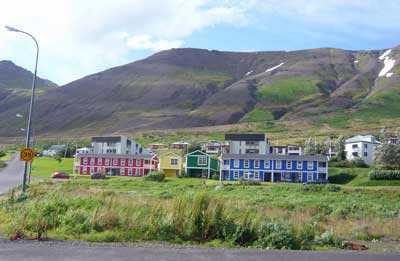
The most common form of accommodation in Iceland is a guesthouse and hostel combination which will have a mix of private rooms and dorm rooms, with shared bathrooms in down the hall. Most of them have fully equipped shared kitchens, so self-catering is at least as popular as eating out while exploring Iceland outside of Reykjavik.
High season (June through August) typical accommodation prices
All prices quoted in US dollars at a rate of about 110 Krona to US$1 in December, 2016.
- Hostel dorm bed: US$34 to US$58
- Single private with shared bathroom: US$85 to US$135
- Double private with shared bathroom: US$118 to US$140
- Double private with en-suite: US$130 to US$320 (and up)
Prices in Reykjavik are a bit higher than elsewhere in the country, but not by much. Prices in the off season are about 30% lower than in high season, but in the slowest months many places close so rates never go much lower than this.
Most Iceland guesthouses are NOT on the normal hotel-booking sites
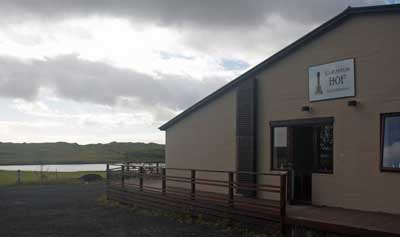
The good news is that when you get to Iceland, the tourism office will give you a directory of almost every guesthouse on the island, and there are other ways of finding these guesthouses and other informal accommodations. Even as of late 2016 you should be able to book a double room (with shared bathroom) for about US$120 per night in most towns in Iceland. If you do a hotel search you might see prices that are double that, but those are in the few formal hotels with 24-hour lobbies and such.
Increasingly, Airbnb and other online rental sites are the best place to find guesthouse accommodation in Iceland. As of only a few years ago, most places would be booked by phone or in person on arrival day, but now more and more places can be pre-booked, at reasonable prices.
Sleeping bag accommodation in Iceland

In a ‘sleeping bag accommodation’ (as it’s known in Iceland) you’ll get a bed with a mattress and often a pillow. So with even a cheap indoor sleeping bag, you’ll be comfortable and warm while saving quite a bit of money. For those renting cars, this is a highly recommended strategy.
You can rent sleeping bags in Reykjavik starting at around €12 per week.
Most Iceland attractions are free (the good news)
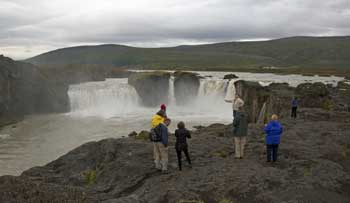
So to see all the glaciers and waterfalls and volcanic beds and other scenic attractions, it’s all free of charge with no admission cost or even parking fees. The larger attractions also have visitor centers where you can get local advice for free as well.
Iceland transportation: Rental cars and buses
Even as a lifetime public transportation fan, I’m very glad I gave in and rented a car to tour Iceland, even as a solo traveler. For the most part the roads are in perfect condition and virtually empty even in high season, so driving couldn’t be easier. Also, the country has stunning vistas every time you turn a corner, so being able to stop in the middle of the road even if there is no room to pullover, is critical.
The buses are modern but also expensive and running on very limited schedules. If you only have enough time to cover the main sights along the southern coast you might buy one of the bus passports that allows you to hop on and hop off, though a rental car is still much better and easier.
Rental cars in Iceland: What you need to know
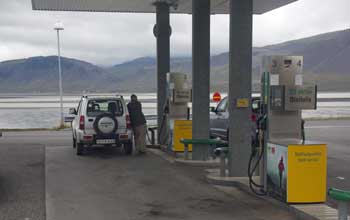
For an extra fee you can pay to reduce that deductible to almost nothing, but the more popular add-on is the Gravel and Glass insurance. For around €10 per day with this coverage you have a zero deductible if the vehicle gets damaged by gravel or if any glass gets broken by flying rocks (or anything else). Unfortunately, many of Iceland’s side roads and even a few of the main roads are covered in gravel, and if you drive at anything above a crawl, there will be some gravel flying around.
Personally, I normally decline add-ons like this but in this case I bought the Gravel coverage after reading a few horror stories in online reviews. I didn’t get any damage that I’m aware of, but the peace of mind was worth a LOT when driving on isolated gravel roads so I wasn’t petrified that I was chewing up the paint job just trying to stay safe on the roads.
Rental cars in Iceland
- 2-wheel drive compact (manual): US$230 per week and up plus add-ons
- 2-wheel drive compact (automatic): US$270 per week and up plus add-ons
- 2-wheel drive mid-size: US$450 per week and up plus add-ons
- 4-wheel drive van or SUV (automatic): US$650 per week and up plus add-ons
Daily rates are about 20% as much as weekly rates, so 5, 6, or 7 days cost the same.
Add-ons
Gravel coverage: US$10/day
GPS (highly recommended): US$10/day
Additional collision waiver: US$10/day
Fuel prices in Iceland
Every gas station in the country has the same prices, which don’t seem to change much. As of December 2016, a liter of petrol is 194 Krona, which is about US$1.75 or €1.63, or about US$7.50 per gallon.
Bus pass prices in Iceland
For a quick day trip from the airport to some local sights you can spend as little as US$90 per person, but for the longer distance buses you’ll spend at least US$130 to US$250 depending on length of time in order to hop on and hop off.
A Ring Road passport will cost around US$400 per person, so for two people it’s no cheaper than renting a car, even after fuel is taken into account, and for 3 or 4 people it’s definitely cheaper renting a car.
Food prices in Iceland
Here’s the thing: sit-down restaurants in Iceland are very expensive by international standards, so there aren’t very many of them. Obviously Reykjavik has many restaurant choices but most smaller towns might have only a few at most. The good news for budget travelers is that fast-food options are more plentiful, and self-catering is even cheaper and easier.
Restaurant prices in Iceland
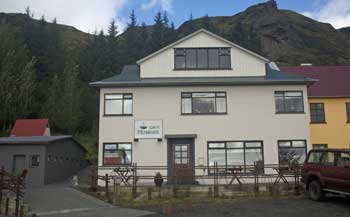
A soft drink, coffee, tea, or even bottled water will generally be between US$3 and US$5 in a restaurant. A pint of beer will typically start at around US$7 at even the cheapest places, while wine and spirits cost even more.
Fast food prices in Iceland
In Reykjavik and larger towns (which might only have 2,000 residents) you’ll have many fast food options including Subway, Quiznos, and usually a few local burger or hot dog places. Prices for a sandwich at Subway are about US$6 for a 6-inch and US$10 for a foot-long, so they aren’t too much higher than elsewhere in Europe, and are sure cheaper than proper restaurants.
More good news for drivers is that many gas stations around the country have fast food restaurants built in, so it’s fast and easy to pick up a sandwich or hot dog by the side of the road.
Hotel breakfast prices in Iceland
Many hotels and guesthouses in Iceland serve breakfast, but it’s almost always at an extra fee, and many don’t serve anything at all. If a breakfast is offered it will typically cost between US$12 and US$15 for a buffet of cereals, bread, cold cuts, cheeses, hard boiled eggs, juices, coffee and tea, and perhaps some pastries.
Making your own self-catering breakfast will be cheaper, but since you can stuff yourself for a flat fee at the breakfast buffets it might be worth it to save yourself the hassle of shopping the day before and making breakfast in the morning.
Self-catering in Iceland
The best budget tip for Iceland is to buy and prepare your own food, and you can literally do it for all three meals per day if you prefer. Since Iceland has almost no national “must-try” dishes, you can buy and prepare your own food without worry about missing anything meaningful.
Nearly every guesthouse in Iceland has a shared kitchen where at least half the guests will be storing and preparing breakfasts and even dinners. They have refrigerators, coffee makers, electric kettles, pots, pans, dishes, and silverware, as well as salt and other spices, so you can buy just the food and you’ll be able to prepare it all.
Supermarket prices in Iceland

For example, you can buy a 400 gram (1 pound) block of Havarti cheese for around US$5, but a similar looking cheese right next to it on the shelf might be US$15 for the same amount. The same is true for lunch meats. Sliced ham can be US$3 for enough to make 2 sandwiches, but sliced roast beef might be US$10 for the same amount.
Some sample prices in the cheaper Iceland supermarkets
- Sliced white bread: US$1.70 per large loaf
- Fresh baguette: US$1.50 to US$2 each
- Hot dog buns: US$2.50 for 5
- Pork hot dogs: US$3.50 for 5 large hot dogs
- Cheap Havarti or other local cheese: US$5 for 400 grams (1 pound)
- Imported cheese: US$10 to 15 for 400 grams (1 pound)
- Sliced ham for sandwiches: US$5 for 400 grams (1 pound)
- Sliced roast beef for sandwiches: US$12 for 400 grams (1 pound)
- Pasta: US$1.50 for .5 kilogram (1.1 pounds)
- Pasta sauce: US$3 for a .5 liter jar
- Ground beef: US$5 for .25 kilos (half pound)
- Bake-at-home pizza: US$5 to US$7 for one person
- Bag of tortilla chips for 2 or 3 people: US$2
- Jar of salsa for those chips: US$3
- Breakfast cereal: US$3 to US$5 per box
The prices above are for many of the cheaper and more common things that budget tourists buy in Iceland. As mentioned above, if you want something exotic and imported, it might cost double or triple what you pay at home, if you can find it at all.
Alcohol prices in Iceland
In restaurants and bars throughout the country you’ll pay at least US$8 for a pint of beer, and at least US$10 for a glass of wine or a simple cocktail. If it’s a fancy place you’ll pay even more, of course.
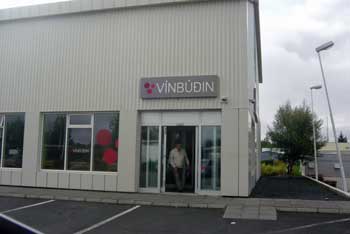
Here are some typical prices for alcohol:
- 330ml can of local beer: US$2 to US$3
- 500ml can of local beer: US$2.50 to US$4
- Cheapest bottle of wine: US$10 to US$12
- .7L bottle of off-brand vodka: US$30
- .7L bottle of mid-level brand vodka: US$50
Bottom line on doing Iceland as cheaply as possible
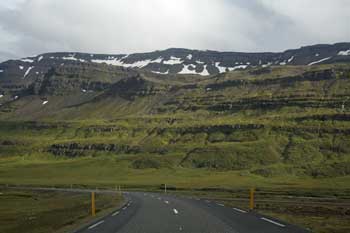
Whether you are going to get dorm beds or private rooms, as long as you will have your own wheels it’s worth renting a sleeping bag. You get the same bed and same services for about US$10 less per night, which will pay for a week’s rental of an indoor sleeping bag.
Unless you are a terrible driver or afraid to drive, it’s highly recommended to rent a car instead of trying to get around using buses. Once you get there you’ll see that having 100% flexibility with a car compared to almost no flexibility with a bus, is worth a LOT.
Instead of trying to be cheap with transportation, be cheap with self catering food and drinks for yourself. If you have at least a small group of people you’ll be able to have a party each evening in or near the shared kitchen of your guesthouse, and it will be more lively than any restaurant in town.

Hi thanks for taking time to provide useful information. My friends and I will be staying in Sandgerdi, west of Keflavik airport, and have booked accommodation for 5 nights in early March. How much of the ring road can we realistically expect to travel to and back to base the same day. Could we travel to Vik and back to base, or even as far as Hofn and back the same day, allowing time to explore, take photos etc along the route? Is it worth spending extra money and looking for accommodation along the route to allow time to explore more areas? Thanks.
Yeeleen,
I’m happy to try to help. You are in kind of a tricky situation, as it would take you about 6 hours to drive from Sandgerdi to Höfn without stopping. It would only take about 3 hours to drive straight to Vik, so that is within day-trip distance. Most of it is a really nice drive, but the first hour or so is sort of a weird moonscape and then you’ll get into the Reykjavik suburbs for the next hour or so. After that, it gets far more interesting all the way to Vik and then to Höfn.
In other words, the areas within two hours or so of where you are staying are light on big sights, while the areas farther away are loaded with them. So if it were me I think it would be worth spending at least one or two nights in the Vik area, or even one night in Höfn. Specifically, the amazing iceberg lagoon called Jökulsárlón is about two hours past Vik on the road, and the Skaftafell National Park is more or less next to it. Those two things are easily among the biggest highlights of the whole Ring Road, so skipping them would be a shame.
Have a great trip and let me know if you have other questions. -Roger
Roger – Many thanks for your response, this is very helpful.
Roger, thanks for this awesome site! I have a few questions of my own.. My fiancé and I were looking into Iceland for our honeymoon for a week. We would love to stay in one centralized location to sleep (instead of somewhere new every night), and was wondering if this is possible? We will be going in mid-November, so I know the amount of sunlight will decrease during the day, but we are willing to drive anywhere to see the beautiful scenery!
Also, I have Celiac Disease (no gluten), and was wondering if this will be a huge problem traveling to Iceland.
Lastly, I know this might be a pretty broad answer in response, but if you had to guesstimate a cost for hotel stay, food and rental car for 5 days what would you come up with? Thanks!
Kayla,
It’s obviously possible to just base yourself in one hotel in Iceland and try to do day trips, but think of Iceland this way: The island takes maybe 30 hours to drive around (on the Ring Road), and the amazing scenery is spread almost evenly all the way around. So those who do the highly recommended Ring Road will see mind-blowing things every hour they spend on the trip. If you were to limit yourself to one area and things that are within, say, a 3-hour drive of that place, you’d be seeing only a fraction of what there is to see, and you’ll be doing lots of backtracking and seeing the same things over and over again.
The tricky part is that there is really just that one main road so there is no central location that is close to more than just a little bit of the island.
So again, I highly recommend doing the Ring Road and am confident that you’ll be blown away by the experience just like everyone else is. All of that said, you could do what you have in mind. You’d do much better if you could at least use two bases over the week rather than just one. The area around Reykjavik has plenty to see but really the magic of Iceland is elsewhere. If you wanted to focus on just one area, I’d recommend the southern coast, specifically the area around Vik. Going east from Vik, you could go all the way to a town called Höfn and there are great sights all the way. Vik is only about 2.5 hours from Reykjavik, and Höfn is about 3 more hours, so you could actually see a lot if you base yourself in Vik.
As far as the food is concerned, I believe that the gluten-free craze has hit Europe so I’m sure there are many people looking for it in Iceland, although obviously only a small number have Celiac Disease so you might have to be more careful than most. If you are like most visitors to Iceland, you’ll do some of your own cooking because there aren’t many restaurants. There are decent supermarkets in every town you’d stop in, so it should be pretty easy to buy gluten-free food.
In November you should be able to rent a car for US$30 to US$50 per day. Renting for 7 days is only a bit more expensive than renting for 5 days. Also, pretty much all of the cheapest car rental deals are for manual transmissions. A hotel will cost around US$100 per night when you are outside of Reykjavik, although all cheaper places will have a shared bathroom down the hall.
As mentioned in the article above, restaurants in Iceland are generally quite expensive, with simple dishes starting at close to US$20 each. Some hotels offer a breakfast buffet, but if not then it’s most common to buy and make your own breakfast, which can be done cheaply. The other main alternative would be fast-food places, which are often attached to gas stations. Fast food meals start at around US$10, so not too much more expensive than elsewhere.
Congrats and have a great trip. Feel free to ask other questions if you have them. -Roger
We are 2 women traveling to Iceland in May and will be going for 10 to 14 days. Will we have trouble finding economy sleeping arrangements? Do we need to book in advance our room. We are comfortable with shared bath and use of sleeping bags.
dorrie,
I know exactly what you mean. One weird thing about Iceland is that much, if not most, of the accommodation is not found or bookable online. I was in the same position before my trip and I was a bit nervous about it. The good news is that there are many guesthouses in each town that are only bookable by phone or sometimes email. As I think I mentioned in the article above, when you arrive in Iceland you’ll have a few chances (like at the tourist desk at the airport or in Reykjavik) to get a free copy of a catalog that lists all of the smaller places in each town. If you have phone service while you are there, or a way of sending email, you should be able to find and book places as you go pretty easily.
Also, since so many people travel around the Ring Road or do other one-way trips like that, it appears that most visitors only stay in each guesthouse for one night. In other words, most places empty out each morning and prepare for a whole new set of visitors each afternoon. And since so little of it is booked way in advance, it seems to be quite easy to find a place in the afternoon as you go.
Lastly, it’s worth noting that the high season for Iceland is basically June through August, and those are the only months where guesthouses often seem to fill up at all. So going in May you should have no problem finding an affordable place in almost any town you approach. And as mentioned, many of these guesthouses offer “sleeping bag accommodation” where you can save US$10 or US$15 per night by bringing your own bedding. From what I can tell, shared bathrooms are the norm all over Iceland, with the only exceptions being larger chain hotels and really high-end places. Pretty much all of these guesthouses also offer community kitchens too, partly because there are so few actual restaurants.
Have a great trip and I think you’ll find that accommodation is quite easy to find once you arrive. -Roger
Hi Rodger
Thank you for answering all our questions with such detail. I am travelling to Iceland later this month with my husband and boys, we are just spending three days around Reykjavik heading to the blue lagoon / northern lights tour which I have booked. I was wondering if my husband and boys could get away with wearing wool jackets as opposed to buying ski jackets. I have all the other warm gear but didn’t want to be left with jackets that wouldn’t be worn again. What are your thoughts on that idea.?
They will have base layers and warm jumpers under these jackets.
Gillybilly,
I’ve only been to Iceland in late August so I can only confirm that it’s chilly even in late summer. However, I see that the temperatures in late February will typically be a bit above freezing, so I think you can get by with a wool layer as long as you also have another layer or two underneath. The wind might be a problem though. You can probably get better advice elsewhere about winter weather. Sorry. -Roger
I also had a second part to my question above since I will be travelling with my Girlfriend, as well. When you drove along the Northern part of Iceland, what were your top 3 places to stop at? I hear a lot about driving the Golden Ring Road, but hear that the bulk of “tourist attractions” are on the Southern part of Iceland. I am really interested in quirky, off-the-beaten path attractions when I travel, so just wondering what your thoughts about Northern Iceland were?
Ray,
I just noticed this part. It’s very easy to confuse the “Golden Circle” which is 3 main attractions close to Reykjavik, with the “Ring Road” which encircles the island.
The Golden Circle consists of a waterfall, the Geysir hot springs field, and a national park that includes the Continental Divide. In my opinion, the waterfall isn’t too special compared to many others you’ll see on the Ring Road. The Geysir field is interesting, although also crowded. And the national park didn’t seem very special to me at all.
On the Ring Road, on the other hand, you come across volcano fields and random waterfalls and national parks and geothermal pools all the way around. Better still, the sights on the Ring Road will be almost empty, while on the Golden Circle they are packed with day-trippers on bus excursions.
All of that said, probably the most interesting part of the Ring Road is the part along the southern coast between Hofn and the Reykjavik area, although once you get close to the capital it gets crowded and more suburban. In other words, do the Ring Road and save plenty of time for the southern coast, but don’t worry about saving a full day for the Golden Circle attractions because they would be a disappointment after all the rest. -Roger
Roger, great informative article! I am planning to go to London, England for a friend’s wedding on July 25. I have been reading online that I should expect to spend about $300 US/day on average for mid-range hotels, etc. So with flights included, I am estimating around $3000 just to stay in London on a mid-range budget.
For Iceland, what did you roughly find that mid-range budget/day to be? My interests lies in covering the Ring Road in 5 – 6 days and less about nightclubbing, etc.
Ray,
Thanks. First off, US$300 per day in London should get you quite a decent hotel plus nice meals and a few drinks. It’s pretty easy to enjoy yourself in London on closer to US$200 per day, although the hotel wouldn’t be as nice or as central.
So to use a US$300/day benchmark, you can expect to spend under US$200 per day in Iceland, although it’s a totally different thing. For one thing, you’ll need to rent a car or buy a bus pass to do the Ring Road, which I agree is the best thing about Iceland. You should be able to find hotels for US$150 per night or less, but you can also find very comfortable guesthouses for US$70 to US$100 per night. The guesthouses don’t have en suites, but they all have a community kitchen for cooking. Honestly, when I was there it felt like the majority of fellow visitors were staying in guesthouses and doing some of their own cooking. There aren’t many proper hotels in some of the smaller towns, though they all have these guesthouses.
Really, it’s the way to go in Iceland because it feels like the whole island (except for the airport and Reykjavik) is one big national park. So people camp or stay in guesthouses and it really has a community feeling that way. Also, there aren’t many real restaurants in the smaller towns, but there is always a little grocery store and usually a fast food place or two at the nearest gas station. I highly recommend that travel style, rather than trying to book into chain-style hotels and looking for sit-down restaurants everywhere you go. It’ll also be much cheaper doing in the guesthouse way.
So as an example, not including your rental car or fuel, you can find a nice room at a guesthouse for US$80 per night. If you buy groceries the night before you can make a breakfast for US$5 or so. If you are driving during the day you might be best off getting lunch at a snack bar or fast food place along the way, which would be around US$10. For dinner, you can buy something at a store for maybe US$10 or even less. Since so many visitors are doing this, the grocery stores have loads of easy-to-prepare items like frozen pizzas and dinners and pasta and sauces and even prepared dinners.
Another part of the equation to be aware of is that Iceland is NOT a foodie destination so there aren’t any local dishes that you need to try. The restaurants are mostly sea-food and Italian or maybe northern European (roast chicken and veggies etc), and a typical dinner will be US$20 to US$30.
Hopefully this helps, and feel free to follow up if you have other questions. You’ll love the place. -Roger
A few college friends and I are trying to take a two week trip to Iceland in August. I’ve been trying to figure out the cheapest way to enjoy what Iceland has to offer, and how to properly budget.
I did find out about camping cards for $121 that are good for two adults, which really equates to about $60 each for enough camp sites for two weeks. Is that actually a viable option?
It seems that renting a car will be the biggest expense. Do you suggest getting a 4×4 or can you get by without? That does make a significant difference in price. I’ve also read to book your car in advance.
Also, how much would you expect us to spend in gas for 13 days, as well as food if we only shop at the local supermarkets for our food?
Do you have advance in terms of different key things to hit while on the road or possible excursions you simply can’t miss?
I’ve been told also purchase groceries from the supermarket in order to save money.
I’m trying to figure if I could spend $1000 for two weeks there. It seems plausible with everything I’ve found so far and dividing costs between 4 people. Thoughts? We will ideally be backpacking and camping out our whole time.
Thanks
Sydney,
I didn’t camp when I visited Iceland, but I know it’s very popular, especially in the warmest months. The camping card sounds like a great deal. Hopefully you can research that more fully elsewhere because I don’t know much about it.
Here’s the thing about rental cars in Iceland. You can drive the entire Ring Road and most of the little offshoot roads from it with a 2WD vehicle. The only place you need a 4WD is to reach the smaller roads nearer the center of the island. For most visitors, the 2WD is just fine, but I believe many of the campsites are on those 4WD roads. In other words, I’m sure you could have a great 2-week trip with a 2WD vehicle, but you might discover that there are some roads that you aren’t allowed on with the thing. I guess it depends on how much more the 4WD costs, and how much you guys can afford. As I mention above, I got a 2WD with the gravel coverage, and I was glad I did. When you find yourself on a gravel road, which could happen a lot, your choices will be to drive at a snail’s pace and pray that you aren’t shredding the front of the car, or drive at a moderate pace knowing you aren’t liable for damage.
I do think that booking a rental car in advance is wise, especially in the high season of August. There’s some chance that you could get a better deal in person, but most likely you’d probably find higher rates from all the legit companies, and maybe a “bargain” from a rent-a-wreck type of place.
I used a Lonely Planet guide on my iPad while touring Iceland, and I was extremely happy with its information and recommendations. I did a full lap of the Ring Road and hit nearly all the famous waterfalls and parks, although I was hurrying through much of it. I think their info is about as good as you can get for a general guide, and certainly far better than I can recommend. One thing though, the famous Blue Lagoon (near the airport) is very expensive and maybe not worth it. I went there for a free look-around rather than a swim, which was interesting, but there are similar places elsewhere on the island that are cheaper.
Your fuel costs probably won’t be too crazy. The gas certainly isn’t cheap there, but it’s a relatively small island and as long as you plan an efficient route, you probably won’t do much more than one lap around the Ring Road, which is 1300KM or 800 miles. You won’t be driving very fast at any point, so you should get decent fuel economy.
Yes, you’ll save a ton of money on food if you focus on groceries rather than restaurants. Pretty much every guesthouse has a community kitchen, and I’m sure most campgrounds have them as well. As mentioned in the article above, the whole Iceland tourism scene seems based on self-catering. There are actually very few restaurants except in larger towns, and all of them are expensive. Most petrol stations have fast-food places built in, which aren’t too expensive. But groceries (as discussed above) are much cheaper and the main way people do it.
If you are camping most of the time, I’d think that US$1,000 should be plenty, assuming there aren’t camping expenses that we don’t know about. Eating can be relatively affordable if you shop and cook, and yes, pretty much all of the “attractions” are waterfalls, vistas, and parks, which are all free for visitors. Best of luck, and let me know if you have more questions. -Roger
Hi Roger,
Really insightful article! I’m considering going there with my girlfriend in the week of christmas for probably 7 nights.
We’re somewhat on a budget but are unfamiliar with the transportation. We’d like to see as much places as possible in the cheapest possible way. Is it really cheaper to rent a car for 7 days in comparison to using the available transportation services to visit the other attractions? At the mean time, what’re the things we should take note of especially travelling in this period? Are there any difference in the attractions?
We won’t have much issues cooking so we know that’s where we’ll be able to save.
Thank you for this wonderful article again! Hoping to hear from you soon!
Cheers!
Jeremy
Jeremy,
I’m always happy to hear that this sort of thing helps. But first off, are you aware that Iceland is just south of the Arctic Circle, and therefore will have almost no sunlight in late December? Actually, from maybe 11am until 2pm it will be light enough to appreciate the scenery, but the rest of the day it will pretty much be dark. Iceland is all about the outdoors and the landscapes and such, so I’m not sure it would be worthwhile in December.
It’s a popular time for those wanting to come see the Northern Lights. But you’d probably be the only ones on the Ring Road in the north. And I’m not sure that the tourist buses even operate during winter. I believe there are normal buses for residents to get from town to town, though I doubt they stop at the waterfalls and national parks along the way.
If you do decide to try it, you could certainly do it cheaply. As mentioned in the article, the “attractions” are all the waterfalls and parks and other scenery, and they are all free.
My recommendation would be to wait at least until March, when you’ll have at least 10 or 11 hours of sunlight, and you’ll still be among the very few tourists there that time of year. Whenever you decide to go, I hope you do go, because it’s an incredible place. -Roger
Hi Roger,
My 21 year old daughter wants to stop and travel in Iceland newt spring for a week (or so) on her way back from London (studying abroad). My wife and I are nervous about her traveling alone. She wants to stay in a hostel and take day tours. Any thoughts on the safety of a 21 year old girl traveling alone for the first time in Iceland (or elsewhere)? Recommendations?
Thanks, Joe
Joe,
Aside from perhaps Japan, I can’t think of a safer place for a young female independent traveler than Iceland. The island is so isolated that it’s literally a place where many locals don’t bother locking their doors. And while there are better, more predictable ways of getting around, the hitchhiking scene in Iceland seems to be quite strong and safe because it’s such a friendly place and everyone speaks English.
In Europe, it’s common to see 18 to 20-year-olds traveling on their own, and it seems to be very safe as long as the traveler is aware of their surroundings. In Iceland, the whole island feels like a national park, so everyone is there to appreciate the nature.
As for what she might do in Iceland, I think staying in at least two different places would be wise. There are plenty of things to see near Reykjavik, but the city itself is not very interesting, and there are more dramatic sights closer to Hofn or Vik, along the southern coast. So I think a couple days in or near Reykjavik (where the airport is), and a couple days in Hofn or Vik or both would be ideal. There is a bus package that lets you do a loop between those cities, and there will be plenty of other solo backpackers on those buses.
I hope this helps, and let me know if you have other questions. -Roger
Hi Roger – I am impressed with you diligence in replying to peoples’ questions! I am planning a trip with my daughter in May 2015. Unfortunately, we will be there for only 6 full traveling days. I like the idea of traveling the ring road, but am concerned that we will not have enough time and will spend the entire time in the car trying to stay on schedule. Any suggestions on planning an itinerary would be greatly appriciated! Best, Lizie
Lizie,
With 6 full traveling days I’m quite sure you can do the whole Ring Road comfortably, and also that it would be far more fulfilling than any smaller alternative. One unfortunate thing about the Ring Road is that it’s really all or nothing in that there isn’t a version where you can cut one-third of it off and drive through the center of the country in a straight line.
Here’s what I did. I rented a car in Reykjavik, and didn’t actually leave the city until around 2pm. I drove north for a few hours and stopped for the night. Over the next 3 full days I made it all the way around to Höfn, which is in the southeast of Iceland, and I had 3 more full days to get the last 500 kilometers back to the airport. I could have driven that section in just 6 hours if I went straight through, but (especially in the southeast) there are many of the top sights through that section, so I gave myself more than enough time to go slow through them.
Now, those first 3 full days on the road were pretty long each day in the car, but I had time to stop and see everything I wanted to and still make it to a hotel by around sunset. In May, you’ll have even longer days than I had, so it will be even easier.
One wonderful thing is that most of the famous waterfalls and other sights are literally at the edge of the Ring Road, so you just drive into a parking lot and there is a huge waterfall. A few sights require a drive of maybe 10 to 30 minutes each way on a dirt/gravel road, but you’d even have time to do most of those.
The next time I do it, I think I’ll take an extra day to get to Höfn, to balance out the driving days a bit better. In other words, I drove about 80% of the Ring Road in the first 3.5 days on the road, and I loved every second of it.
The one slightly tricky part for you would be finding towns and hotels that are spaced out to fit your schedule. Except along the southern coast, the little towns with little guesthouses can be 100 kilometers (60 miles) apart, so you have to plan and pace yourself right. It should be easy to do as long as you plan in advance though.
As always, please let me know if you have other questions that I might help with. I continue to daydream about my next Iceland trip, so it’s fun to try to help other people plan their own journey. -Roger
Hi Roger – How wonderful of you to respond so promptly – You are a breath of fresh air.
This was the answer I was hoping for!
We arrive EARLY in the morning and so will be able to get our rental car as soon as they open and get right on the road. I will research cell phone/ sim card options so we can plan our days and make reservations while we are on the road.
I’m sure I will have many questions between now and May and so will be back in touch 🙂
Thank you for this site and your generous responses!
Lizie